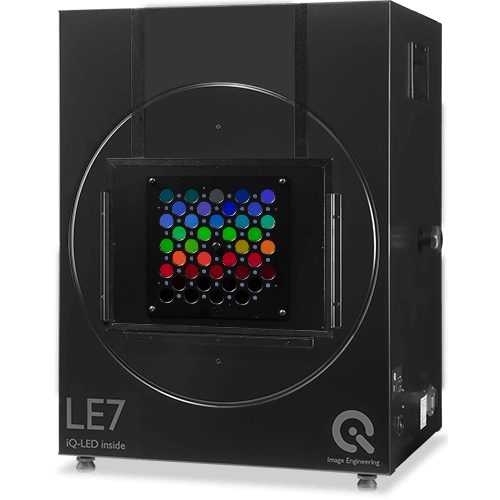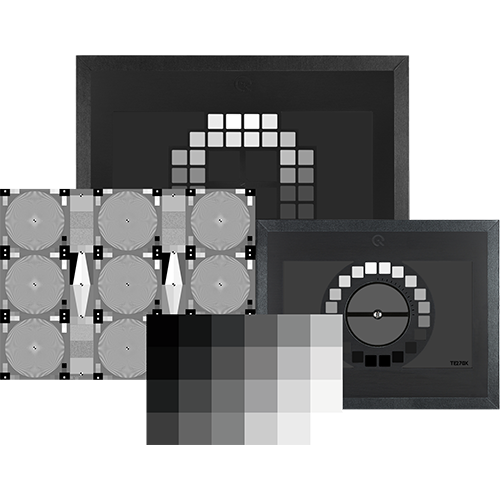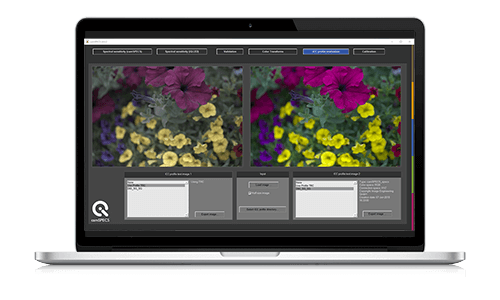camSPECS plate VIS-IR
A new version of the camSPECS plate for IR testing

The camSPECS plate VIS-IR is the latest version in the camSPECS plate line. This version has an extended wavelength range from 380 nm to 1050 nm in 10 nm steps and has a total of 68 filters. As with the other versions, the camSPECS plate is best utilized with the LE7 and this version requires an LE7-IR.
The camSPECS plate is a different color calibration option designed after the front plate of the camSPECS device. As with the camSPECS, this plate mounts all of the interference filters onto one “test chart” and can then quickly calibrate and measure spectral sensitivity in just a single image.
TE283C
A slanted edge chart for fisheye cameras

The TE283C test chart is designed for testing the resolution performance of a fisheye camera system. The target has slanted edges surrounded by grey steps for linearization. This chart is also found in the iQ-FoV Box, which is our all-in-one solution for measuring wide field-of-view camera systems such as those found in the automotive industry.
Infrared (IR) test charts
Many of our charts can be used for near IR testing

Did you know that many of our test charts are also available for near infrared testing? Most of our transmissive test charts as well as many of our reflective test charts can be crafted for IR testing. In addition, many of our iQ-LED illumination devices can also be equipped for IR testing thus providing you with a reliable near IR testing solution.
Camera color characterization
Advanced solutions for camera color characterization

The traditional method for color characterization has always been to use a test chart such as a ColorChecker. However, as technology has advanced, so too have the solutions for color characterization. Our engineers have developed solutions that offer higher accuracy and characterize cameras in multiple situations, such as on a production line.

